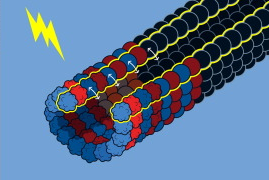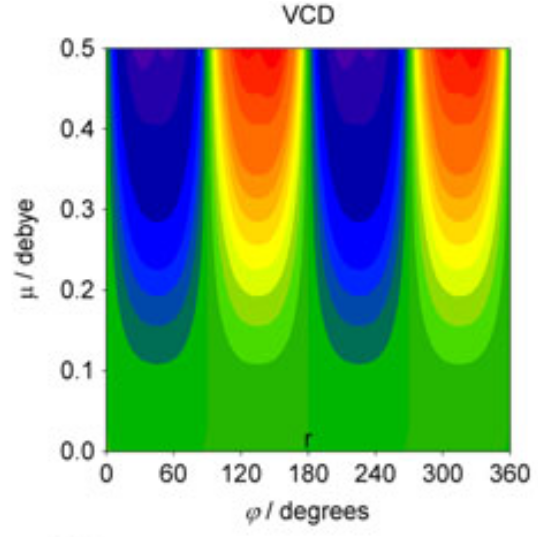Effect of electric field on proteins
Spectroscopy, as a scientific discipline, focuses on the study of the interaction between light and matter. Typically, when discussing spectroscopy, it serves as a tool for analyzing the structure and dynamics of proteins. However, an intriguing question arises concerning whether the electromagnetic field can also be utilized to induce changes in the structure or dynamics of proteins. This possibility holds the potential for significant applications in medicine and nanotechnology. In collaboration with Dr. Michal Cifra’s research group at the Institute of Photonics and Electronics, Czech Academy of Sciences, we are exploring these possibilities by predicting the effects of the electric field on proteins through computer simulations.

Relevant publications
Marracino, Paolo, et al. “Tubulin response to intense nanosecond-scale electric field in molecular dynamics simulation.” Scientific reports 9.1 (2019): 10477.
Průša, Jiří, and Michal Cifra. “Molecular dynamics simulation of the nanosecond pulsed electric field effect on kinesin nanomotor.” Scientific Reports 9.1 (2019): 19721.
Průša, Jiří, et al. “Electro-opening of a microtubule lattice in silico.” Computational and Structural Biotechnology Journal 19 (2021): 1488-1496.
Spectroscopic Exploration of Self-Assembled Structures

In collaboration with research group of Prof. Petr Bouř we focus on the spectroscopic study of self-assembled biomolecular structures, particularly exploring optical activity phenomena manifested through the differential absorption of left and right circularly polarized light by chiral molecules. This specialized spectroscopy, known as chiroptical spectroscopy, involves the use of vibrational circular dichroism (VCD) for absorption in the infrared region. In one project, our attention is directed towards VCD enhancement by fibril protein structures. Fibrils, which are highly organized protein aggregates, are the subject of our investigation due to their implicated negative role in the development of neurodegenerative diseases such as Alzheimer’s, Parkinson’s, Huntington’s disease, or prion encephalopathies.
Relevant publications
Průša, Jiří, and Petr Bouř. “Transition dipole coupling modeling of optical activity enhancements in macromolecular protein systems.” Chirality 30.1 (2018): 55-64.
Kurochka, Andrii, et al. “α-Synuclein Conformations followed by vibrational optical activity. Simulation and understanding of the spectra.” Physical Chemistry Chemical Physics 23.31 (2021): 16635-16645.